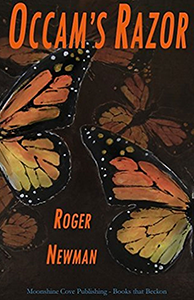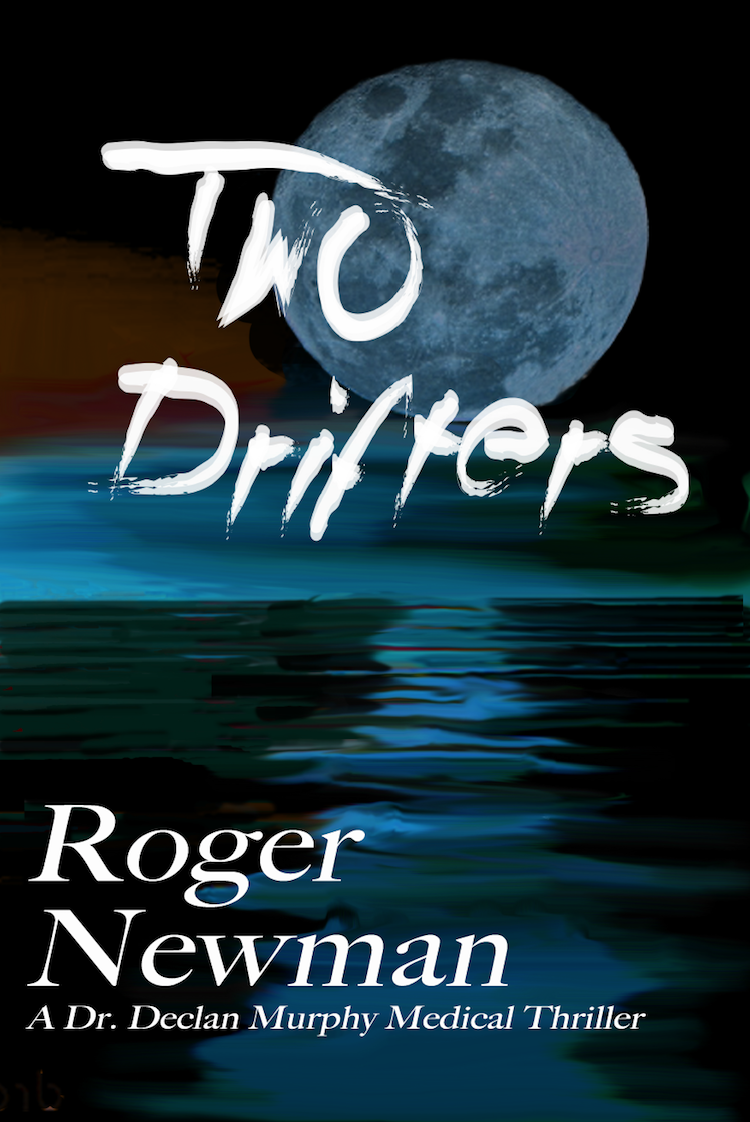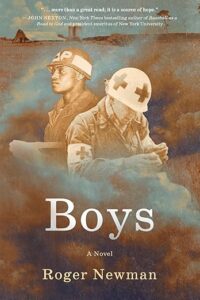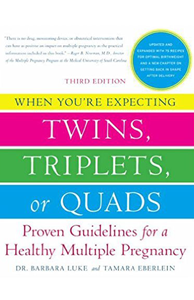One of my great young partners, Dr. Krista Wagoner, gave a really informative grand rounds last week. It’s title was “Teaching the Millennial Medical Student” (Gen-Yers, 1977-1995).Being an old coot, I’d heard similar talks in the past as we (Baby Boomers, 1946-1964) wondered how to best teach the Gen-X’ers (1965-1976). We’ll hear them again when the Generation Z’ers (Centennials, born 1996 and later) come through.
In her presentation, Dr. Wagoner reminded us that one of the greatest challenges in medical education is dealing with the explosion of the information age. I can’t remember the exact number, but the total amount of medical knowledge now doubles about every 5-10 years. Millennials are better prepared to deal with this informational explosion than any previous generation of medical school students or residents .
The Millennials are far more technologically savvy than we, their teachers. As teachers, we must learn how to best use web-based and online teaching, overwhelmingly preferred by Millennials, compared to the learned lecture which Baby Boomers depended on for information transfer. The pace of learning has also accelerated. We were given difficult clinical questions and told to hit the library. Millennials are now Googling the answer before I can finish formulating the question. Medical school libraries are no longer the hallowed cathedral of learning they used to be. Libraries are now dusty, lonely places and the library “study cubicle” no longer exists.
A troubling Millennial characteristic, however, is a nurtured sense of entitlement and a relative antithesis to academic competition. Millennials have grown up receiving “participation medals.” Their “academic expectations” have fueled a well-documented and dramatic degree of grade inflation over the past two decades. More than previous generations of medical students or residents, Millennials are more involved with social activism and more demanding of a life/work balance.
It is possible that these final characteristics may contribute to what I consider the greatest problem currently facing medical education. In Dr. Wagoner’s lecture, we primarily discussed approaches to didactic medical education. In my opinion, our most pressing challenge in medical education is the diminished clinical experience available for the Millennial medical student and resident. American humorist, Will Rogers, expressed the simple truth applicable to all human endeavors including medicine, “Good judgement comes from experience. Experience comes from bad judgement.”
In the year 2000, the Institute of Medicine (IOM) published a sentinel paper entitled, “To err is human: building a safer health system.” Their estimation that 45,000 to 90,000 patient deaths per year were attributable to medical error shocked the health care system. This report, along with a threat of Congressional intervention, prompted the Accreditation Council for Graduate Medical Education (ACGME) to institute limitations on medical student and resident duty hours with the stated goal of achieving the proper balance between education and service while simultaneously assuring patient safety.
It is unquestioned that both acute and chronic sleep deprivation results in significant performance reductions as measured by a variety of tasks. However, there was an acknowledged absence of any conclusive data on how work hour restrictions would impact clinical performance in medicine, patient safety, and student or resident learning. Clinical and simulation-based studies performed after the institution of the work hour limits suggested reductions in attentional failures, medical errors, and improved surgical dexterity, while other studies identified either no difference, or an actual deterioration in both clinical care and education during residency training.
Many educators believed that the “one-size fits all” ACGME regulations, instituted without evidence of how they would impact either medical care or education, would likely fall victim to the Law of Unintended Consequences.
In 2003, just before the work hour regulations were implemented, Dr. Bobby Pereyo and I initiated a small research project along with colleagues in Psychiatry. The goal of our study was to objectively assess the effect of a prolonged 30+ hour work shift on performance in an Obstetrics and Gynecology residency program. We recruited 20 Ob-Gyn residents to participate in our study, before, during and following an on call night shift on our labor and delivery unit.
The study was performed in the Department of Defense funded MUSC Brain Stimulation Laboratory. Our residents presented for testing in the morning preceding an overnight on call shift after at least two days without call. They returned that afternoon after a 10 hour day shift for re-testing. They also returned the following morning for a third set of tests after completion of their night call (24 hours after arrival at work), and for a fourth and final testing session that afternoon before going home (approximately 30+ hours after arrival).
We used two well-verified objective tests. The first was the Sternberg Working Memory Task (SWMT)which is a widely used test of attention and working memory which reliably demonstrates changes after sleep deprivation.The SWMT reveals a progressively more difficult set of letters for 3 seconds (recognition) then the screen goes blank for 7 seconds (retention). A probe letter is then displayed for 3 seconds, and the subject responds “yes” or “no” according to whether or not the probe letter was included in the previously viewed set (recall). Subjects are to respond as quickly as possible, and the computer records both response times and error rates over the course of the 5 minute examination.
The second test was a way cooler and more complex Multi-Attribute Task Battery (MATB) which was developed by NASA to assess the multi-tasking capabilities of pilots and astronauts under sleep deprivation or intense stress conditions. The MATB requires performance of 4 simultaneous tasks analogous to those required in flight and requires 30 minutes for completion. The MATB screen is presented in the image above.
The dominant task is a compensatory tracking task which requires the subject to use a joystick to keep a randomly moving symbol centered on a 0.5 x 0.5 cm cross-hatched grid screen. Failure to control the symbol results in the symbol drifting further away from the center cross. Tracking performance is evaluated in terms of deviations from the center of the tracking target in pixel units. Distractors from the tracking task included continuous visual monitoring or red vs green emergency lights, rising and falling dial indicators, continuous auditory communication input via headphones regarding radio dial changes, and a complex resource management task (refilling fuel tanks) requiring use of the keyboard. All these randomly occurring distraction tasks were monitored by the computer for response time and accuracy.
In addition to these objective tests, we also had each resident complete subjective questionnaires assessing mental and physical exertion and mood using the Maslach Burnout Inventory (MBI) and the likelihood of falling asleep using the Epworth Sleepiness Scale (ESS).
All of these tests are known to be highly sensitive to sleep deprivation.Reliably, 24 hours of sleep deprivation is associated with a 25%-30% reduction in performance among college aged volunteers and military personnel tested in the BSL. Our resident’s results shocked our collaborators in the Brain Stimulation Laboratory.
Objectively, the 30+ prolonged work hours had no significant impact on reaction time or error rates on the Sternberg Working Memory Task. Similarly, on the Multi-Attribute Task Battery, there was no deterioration in the tracking function, reaction time to the dials, monitoring errors, or resource management. Only the reaction time to light signals was significantly affected over the course of the 4 testing periods. The light reaction time actually showed improvement over time. There was no objective evidence of deterioration in memory, eye-hand coordination, alertness or cognitive awareness in the setting of multi-tasking responsibility with 30 hours of an Ob-Gyn work assignment.
Subjectively, there were no differences in the reporting of emotional exhaustion, depersonalization or lack of personal achievement on the MBI. Not surprising, the ESS rose significantly between the first and final testing session. Interestingly, however, those residents who reported the greatest sleepiness actually performed significantly better on the Sternberg Memory Task than did those who reported low sleepiness. Those who felt the sleepiest, focused the hardest on the memory task.
One explanation for these remarkably unanticipated findings may be the concept of resilience. Individual response differences to sleep deprivation have long been recognized and has been found to be a consistent trait within individuals. Given the rigors and long hours in medical training, it is possible that medicine might select for individuals with a tolerance for long work hours. It is also well-known that Ob-Gyn is a speciality that demands night call and prolonged work hours. The almost universal resilience demonstrated by the Ob-Gyn resident staff was something that the BSL investigators had never seen before. The medical student who chooses a career in Ob-Gyn may be qualitatively different from their peers in terms of their resilience or it may be an acquired characteristic once training begins.
Clearly, it is not possible to generalize our study results based on a small sample of Ob-Gyn residents playing video games. As the reviewers who rejected our paper strongly pointed out, our results do not provide proof that prolonged work hours have no negative impact on clinical performance and decision-making processes. And, even if it did, our work isn’t going to change the ACGME requirements. True and true. However, among actual Ob-Gyn trainees, objectively measured, the assumptions regarding the impact of prolonged work hours on clinical performance, underlying the ACGME work hour limitations, were not confirmed. And, have still not been confirmed.
The benefits of a less grueling medical school and residency training experience on lifestyle, mood, energy and alertness (burnout) are obvious and important. However, they come at a cost. During a 4 year Ob-Gyn residency, work hour limitations have reduced patient care experience by at least 25%. Significantly fewer deliveries and surgeries are performed by individual residents in training. Fewer complications are encountered and there is less time for debriefing. It is not clear that these reductions in clinical experience can be made up for in didactic lectures, simulations or web-based learning.
Maybe most concerning, is the effect of work hour restrictions on patient care continuity and bedside learning. A study from the University of California, San Francisco, identified a 40% increase in patient handoffs after institution of duty hour limits with each intern being involved in >300 handoffs during a month-long rotation. Art Linkletter taught us years ago how patient care handoffs can jeopardize the continuity of care when he lined up 10 kids on stage and whispered a message to pass down the line. Kids say the darndest things during patient hand-offs.
Circling all the way back to Dr. Wagoner’s lecture, she unfortunately had no solutions to the question of maintaining an adequate medical school and residency clinical experience for Millennials. It isn’t her fault. There aren’t any easy answers. Currently, medicine is choosing to ignore the fact that Millennial trainees finish with substantially less clinical experience than the preceding generation. Obviously, one solution would be to increase medical school or residencies by an extra year or whatever is necessary. No one is very excited about that idea, more importantly, no one is willing to pay for it.
Does it matter? Has almost two decades of an unproven experiment with work hour restrictions in professional medical education paid any dividends? Has the mandated undertraining of our students, institutionalized patient hand-offs, and a shift-work mentality, resulted in unintended consequences?
Our challenge is how to both reach Millennials with new teaching techniques, as well as improve their clinical experience, and hence, their clinical judgement. A real challenge of the 21st century is how to get medicine out from in front of a computer screen and back into patient rooms. In the high stakes, high responsibility world of the medical profession, a “participation medal” is not sufficient.
Thinking back to residency, one of the most vivid memories was trying to make it through those last couple of hours before sunrise. Once the sun was up, the sleepiness and fatigue would improve and a big Medical University breakfast would fuel the new day. My Springsteen selection for today’s blog is one of his great encore performances- “Just around the corner from the Light of Day.”







Roger, a great commentary!!! truly enjoyed reading it!! You should send in to a journal as an editorial!!! truly makes one think!! As you know, when I was a resident we had 2 per year-when on call for weekend we came to hospital Friday morning and went home Monday afternoon!! Learned to sleep in between pts and fall asleep in minutes-on awaking could handle a problem and be back to sleep in minutes-still present today!! Again loved your remarks!!
Right on, Bro! I read the blog post…almost completely. ( Never look to hard at something that confirms , rather than challenges, my opinions.
Probably not a lot of corroborative studied out there, eh?
I’m certain that patients have suffered in the short term ( excess handoffs, poor decisions born of misunderstanding and inadequate data, worse compliance with medical advice delivered by a total stranger) and the long term( dumber doctors)
Thanks. Biggest issue is really the long term one.